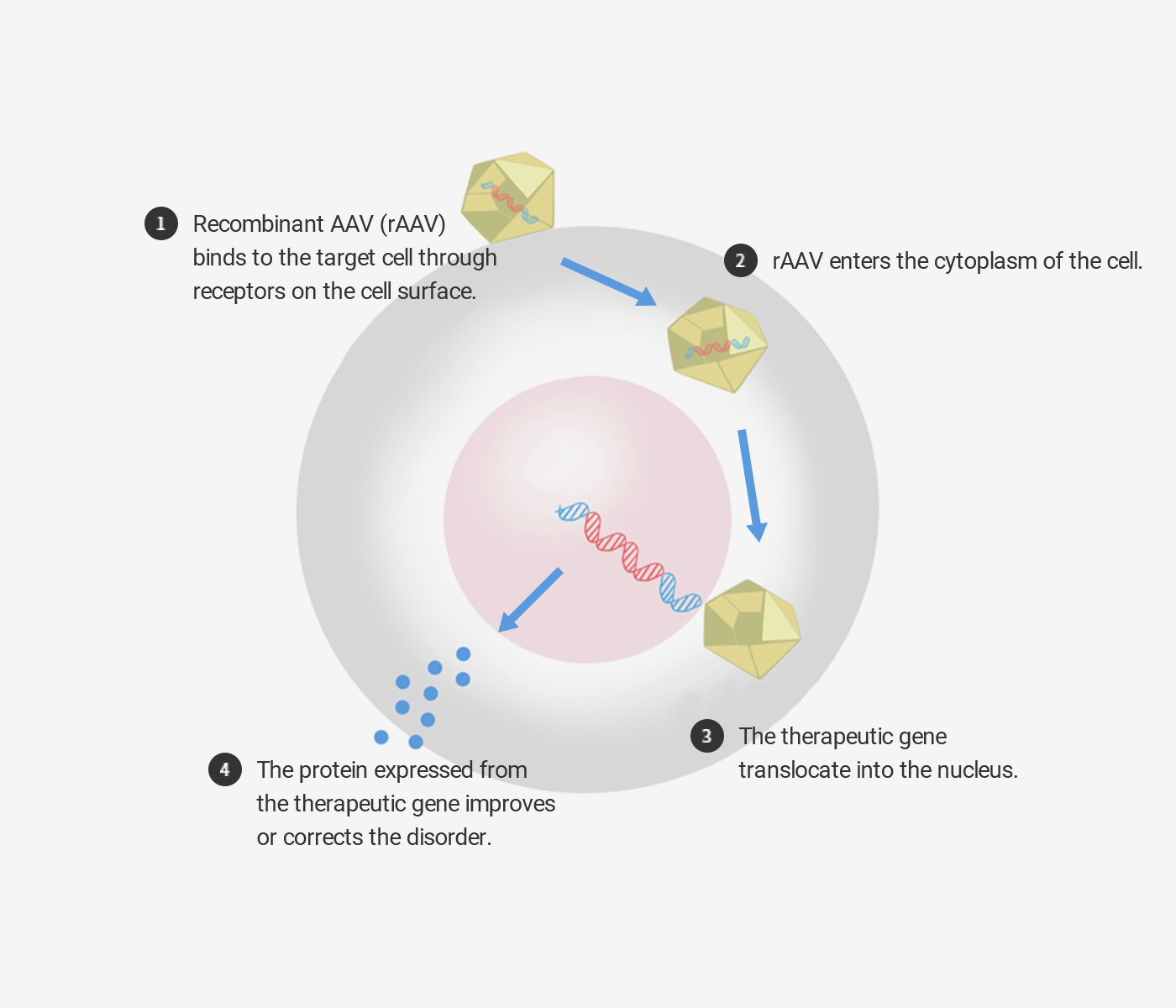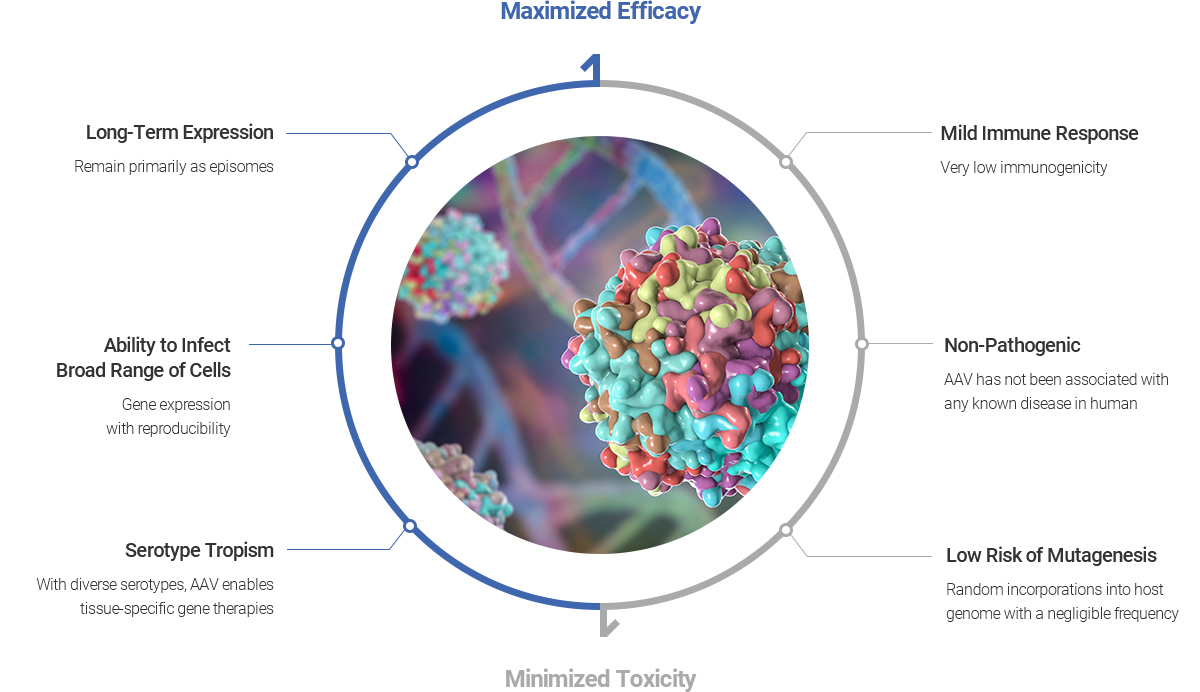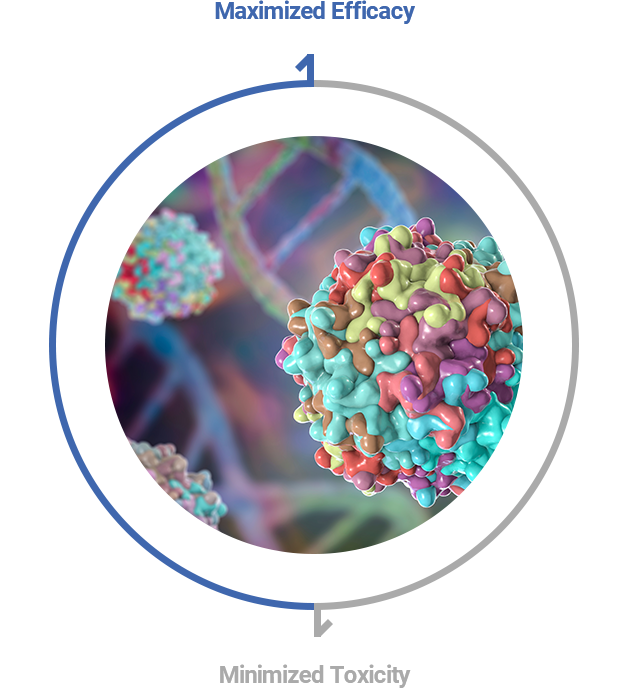AAV Gene Therapy
What is gene therapy?
Gene therapy is a treatment that involves introducing genetic material into patients’ cells to be cured for disease treatment.
Delivering a therapeutic gene to target cells require proper carrier (vector system), which can be classified into viral vectors and non-viral vectors.
The advantages of viral vectors are highly efficient transduction and expression of therapeutic genes into target cells.
Among viral vectors, Adeno-Associated Virus (AAV) is an emerging method for delivering therapeutic genes to target cells by virtue of mild immune response and overall safety.
How does gene therapy work?

What are the advantages of using AAV vectors for gene therapy?
Adeno-associated viruses (AAV) are small viruses with a capsid of 18-25 nm and have linear single-stranded DNA (ssDNA) genome of approximately 4.7-6 kilobases (kb). Recombinant AAV vector is generated by replacing the wild type AAV DNA with a therapeutic gene expression cassette. Mild immune response and longer lasting transgene expression has enabled AAV vectors gain popularity as one of the most idealistic therapeutic vector.


- Long-Term Expression Remain primarily as episomes
-
Ability to Infect
Broad Range of Cells Gene expression with reproducibility -
Serotype Tropism
With diverse serotypes, AAV enables
tissue-specific gene therapies - Mild Immune Response Very low immunogenicity
-
Non-Pathogenic
AAV has not been associated with
any known disease in human -
Low Risk of Mutagenesis
Random incorporations into host
genome with a negligible frequency